If you want to allow or block Zoom from installing updates automatically, this step-by-step guide will help you. Here is how you can enable or disable Zoom auto update using the Local Group Policy Editor and the Registry Editor.
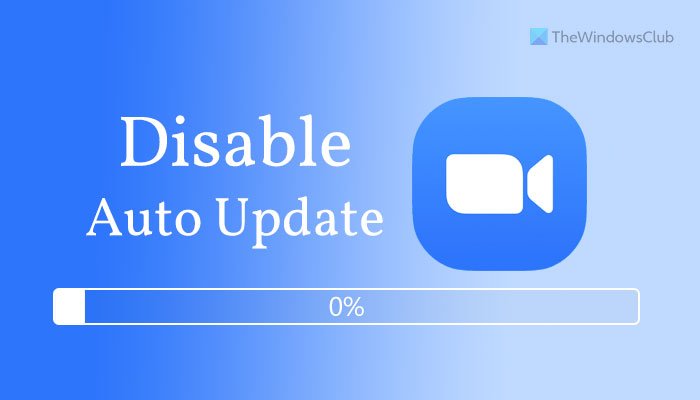
By default, the Zoom desktop client downloads and installs available updates automatically. The worst thing is the desktop app doesn’t have any option to disable this functionality. Therefore, if you want to prevent Zoom from installing updates automatically, here is how you can do that. The best possible way is to use the Registry Editor. However, if you want to use the GPEDIT method, you need to add the Group Policy template of Zoom first.
How to enable or disable Zoom auto update using Registry
To enable or disable Zoom auto update using Registry, follow these steps:
- Search for regedit in the Taskbar search box.
- Click on the search result.
- Click the Yes button.
- Navigate to Policies in KHLM.
- Right-click on Policies > New > Key.
- Set the name as Zoom.
- Right-click on Zoom > New > Key.
- Enter the name Zoom Meetings.
- Right-click on Zoom Meetings > New > Key.
- Select the name as General.
- Right-click on General > New > DWORD (32-bit) Value.
- Name it as EnableClientAutoUpdate.
- Keep the Value data as 0.
To know more about these steps in detail, keep reading.
At first, open the Registry Editor on your computer. For that, search for regedit in the Taskbar search box and click on the individual search result. Your computer might show the UAC prompt. If so, click the Yes option.
Then, navigate to this path:
HKEY_LOCAL_MACHINE\SOFTWARE\Policies
Right-click on the Policies > New > Key, and name it Zoom.
Then, right-click on Zoom > New > Key, and set the name as Zoom Meetings. Here you have to create another sub-key. To do so, select New > Key from the Zoom Meetings context menu and name it General.
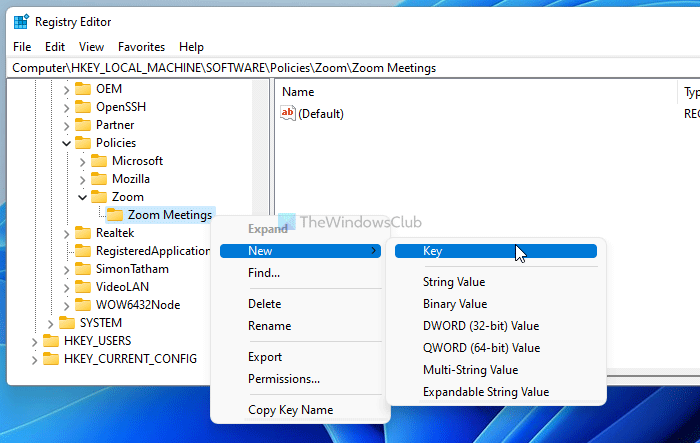
Now, right-click on the General sub-key, and select New > DWORD (32-bit) Value.
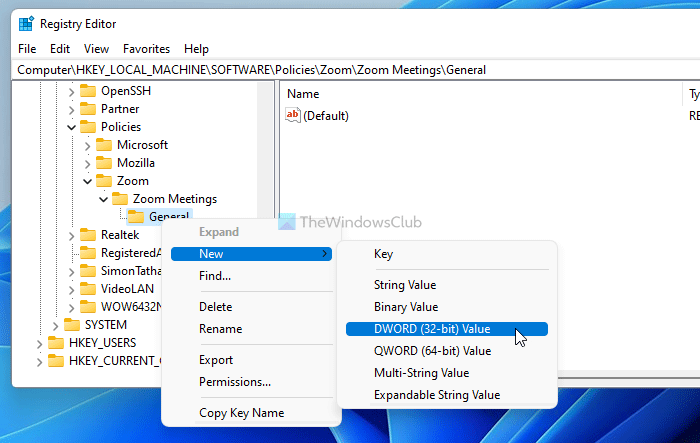
Name it as EnableClientAutoUpdate. By default, it carries 0 as the Value data, and you need to keep it that way.
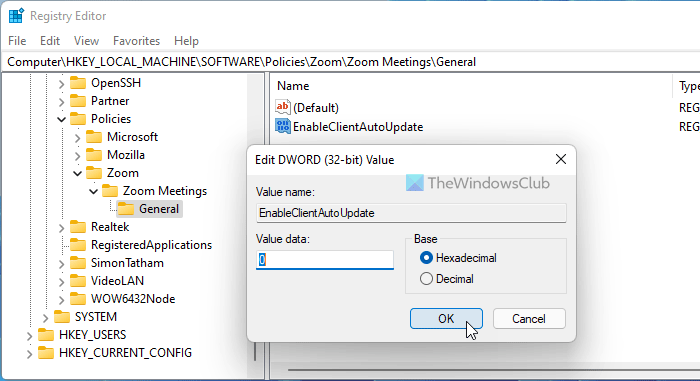
At last, restart your computer. After that, the Zoom desktop client won’t install updates automatically.
If you want to get back the original setting, you need to delete the EnableClientAutoUpdate DWORD value. For that, right-click on it, select the Delete option and confirm the change.
How to allow or block Zoom to install updates automatically
To allow or block Zoom to install updates automatically using Group Policy Editor, follow these steps:
- Press Win+R to open the Run prompt.
- Type gpedit.msc and hit the Enter button.
- Go to Zoom General Settings in Computer Configuration.
- Double-click on the Enable client to auto update setting.
- Select the Disabled option.
- Click the OK button.
Let’s find out more details about these steps.
To get started, you need to open the Local Group Policy Editor. For that, press Win+R, type gpedit.msc, and press the Enter button.
Once the Group Policy is opened, navigate to this path:
Computer Configuration > Administrative Templates > Classic Administrative Templates > Zoom General Settings
Double-click on the Enable client to auto update setting and select the Disabled option.
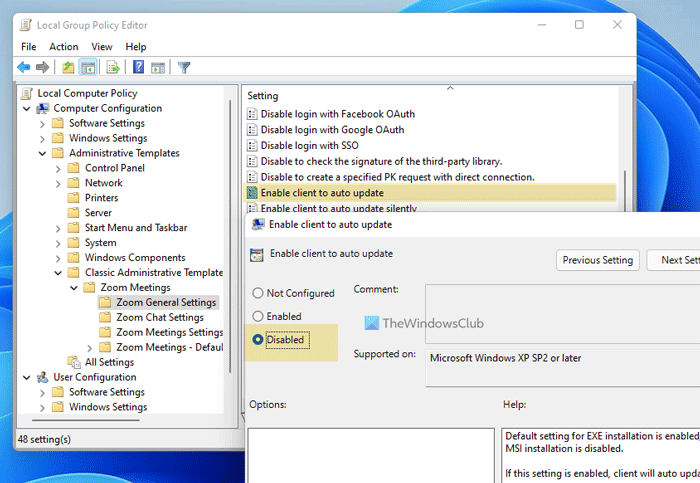
Click the OK button to save the change.
If you want to revert this setting, you need to navigate to the same path, open the same setting, and select the Not Configured option.
Can Zoom automatically check for updates?
Yes, Zoom checks for updates automatically and immediately after installing the desktop client. No additional setting is required to enable this functionality.
How do I make my Zoom update automatically?
You do not need to change any setting on your Windows computer to allow Zoom to update automatically. However, suppose it is not updating on its own. In that case, you need to verify the Enable client to auto update setting in Group Policy and Enable client to auto update DWORD value in Registry Editor.
That’s all! Hope this tutorial helped.
Read next:
Leave a Reply